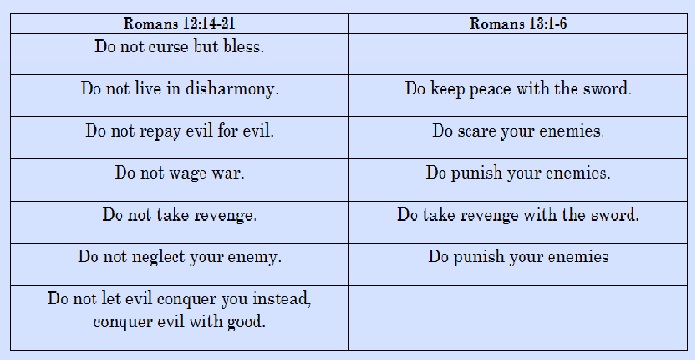From the book: The Crucifixion of the Warrior God: Interpreting the Old Testament’s Violent Portraits of God in Light of the Cross by Greg Boyd.
Another frequently cited example of Jesus condoning violence takes place just after the last supper and just before Jesus and his disciples were going to travel to the Mount of Olives to pray. To prepare his disciples, Jesus tells them: “if you don’t have a sword, sell your cloak and buy one” (Luke 22:36). According to some scholars, this instruction indicates that Jesus did not uniformly forbid his disciples to resort to violence in response to aggressors.[1] When read in context, I think it becomes clear that this instruction implies nothing of the sort.
First, as is true of the violet interpretation of Matthew 10:34, this interpretation of Luke 22:36 flies in the face of Jesus’s unqualified teachings about loving and serving enemies and about refraining from violence in Luke’s Gospel, as well as in the other Gospels (e.g., Luke 6:27–36). Indeed, it “subverts everything else Luke records about the nature of Christ’s kingdom.”[2] On the assumption that Jesus would not blatantly contradict himself, this means that we should be strongly disinclined to assume that Jesus intended his disciples to actually use the swords he instructed them to buy.
Second, in response to Jesus’s instruction to acquire swords, the disciples tell him they have two swords among them, to which Jesus replies, “That’s enough!” (Luke 22:38). Yet, arming his disciples with a mere two swords would have been ridiculous if Jesus intended them to take on the Temple Guard who were going to arrest him in the near future. The fact that this was not Jesus’s intent is made perfectly clear by his response when one of his disciples tried to defend Jesus by using his sword to cut off the ear of “the servant of the high priest” (Luke 22:50). He rebuked this disciple by saying, “No more of this!” (v. 51). His rebuke is even clearer in Matthew’s Gospel which recounts Jesus reminding this misguided disciple of the cyclical nature of violence. “Put your sword back in its place,” Jesus said, “for all who draw the sword will die by the sword” (Matt 26:52). And having rebuked this disciples’ typical worldly response to aggression, Jesus then modeled the way he would have disciples respond to aggression by healing this servant’s ear (Luke 22:51). Disciples are to serve, bless, and pray for enemies, not afflict them.
We are nevertheless left with the question as to why Jesus told his disciples to purchase swords? The reason becomes perfectly clear if we simply attend to the verse that follows this instruction, for Jesus himself explains his instruction by quoting Isaiah 53:12: “And he was numbered with the transgressors.” Jesus then adds: “and I tell you that this must be fulfilled in me. Yes, what is written about me is reaching its fulfillment” (Luke 22:37). It is apparent that the purpose for having two of his disciples carry swords was not so they could defend him but simply to fulfill this prophecy, thereby justifying his opponents arrest of him as a political revolutionary.
Finally, it is significant that when Jesus later appeared before Pilate and was asked if he was the king of the Jews, Jesus responded that his kingdom was not of this world, and he pointed to the fact that his followers were not fighting as proof of this fact (John 18:36). Were he a king over any earthly kingdom, Jesus is pointing out, his followers would have certainly taken up arms to defend him. This is how all earthly kingdoms operate. The fact that Jesus’s followers were not fighting thus constitutes the definitive proof that the kingdom Jesus inaugurated was of a very different sort. And this simply confirms the point that Jesus never intended his disciples to use the swords he instructed them to purchase.
[1] Desjardins, Peace, Violence, 76–77; Aichele, “Jesus’ Violence,” 81–85.
[2] Klassen, Love of Enemies, 99.




